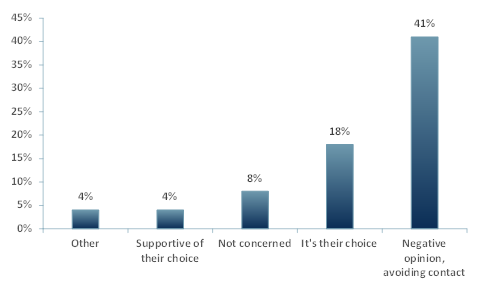What more can governments do to ensure people wear the right kind of mask?
TIME magazine published an article on the effectiveness of homemade masks on 24 August 2020 and spoke to the controversy and confusion around them.
In March, top US public health officials told the general public that masks were not needed as they would not fully block the spread of Covid-19 particles. This advice was directly related to the shortness of personal protective equipment (PPE).
Though the US public health officials’ statement is true to a degree , it is also designed to be ‘misleading’ by avoiding the key message: masks do not prevent infection but they do reduce the probability or getting infected or passing Covid infection on to others.
The initial assumption was that because masks worked to prevent particles from getting into the air where others could inhale them, the Centers for Disease Control and Prevention (CDC) advised that only sick people were to wear them.
Studies have shown that individuals can be asymptomatic and unknowingly contagious, therefore they should not be breathing on others.
The US President, Donald Trump, created further confusion for the US general public by calling the act of wearing a mask as ‘patriotic’ but then choosing not to wear one during public appearances.
In June 2020, the Morning Consult carried out surveys in the US that observed people’s opinions on whether individuals chose to wear or not wear a mask during the Covid-19 pandemic. (All surveys were carried out on individuals aged 18 years and older.)
Exhibits 1 and 2 show that most people don’t have much of an opinion whether individuals wear a mask or don’t wear a mask, at only 50% and 41% respectively. What the research will inevitably show in time is that wearing a mask, any kind of mask (except maybe a fleece mask – see our Part 1 blog on mask material testing -, should not be an option if we are to fight and overcome this pandemic.
Exhibit 1 – Percent of individuals who have a positive opinion of people that choose to wear masks, June 2020

Sources: ACF Equity Research; Morning Consult
Exhibit 2 – Percent of individuals who have a negative opinion of people that choose not to wear masks, June 2020

Sources: ACF Equity Research; Morning Consult
Globally the science and research around masks continues to evolve – below are several findings:
- Raina MacIntyre, infectious disease expert from the University of New South Wales, says that homemade masks can be made more effective the more layers they have, i.e. a minimum of three, making sure the outer layer is made of a water-resistant fabric.
- Ben Abbott, environmental sciences professor from Brigham Young University in Utah, advises that your nose must be inside the mask at all times because droplets can be produced from the nose just as they can from the mouth.
- Additional studies show that a multi-layered homemade mask will work just as well as a surgical mask. Our Part I blog (Low-cost measurement of facemask efficacy for filtering expelled droplet during speech) reports the levels of particles emitted by the different types of masks used, including homemade ones.
- In regards to filters, MacIntyre suggests that as long as individuals are wearing a multi-layered mask then a filter is not necessary. Furthermore, in order for it to be effective it would need to cover the whole mask. A small filter will still allow for air to move around it and increase the risk of infection.
- If individuals really want to use filters then experts suggest ones made of polypropylene – a material made from plastic that has electrostatic charges that help trap incoming and outgoing particles.
- Indoor transmission risk is much higher than outdoor, which means that individuals should be wearing masks every time they are indoors or perhaps more practicably, out of their homes but indoors.
- Masks should also be worn outside at all times especially when you feel you are unable to maintain a six-foot or two-meter distance from others.
- Even if you are not sick you must wear a mask as individuals are more contagious the days prior to having symptoms.
- Always wear a mask while exercising indoors. On the other hand, Abbott says that while exercising outdoors it is less likely that you can catch or spread the virus when moving past someone quickly.
- Most people will not wear masks at home, however if there is an individual that is at high-risk then wearing a mask at home is advisable.
- Homemade masks can be washed in the laundry machine at high temperature and after every use. Always have at least one clean spare mask on hand while the other is being washed.
According to MacIntyre there aren’t any valid reasons not to wear a mask.
Although masks may feel uncomfortable or potentially cause acne, fabric homemade masks are very safe and can save lives.
In patients with severe asthma or advanced emphysema a mask could exacerbate breathing problems, however, that is not an excuse not to wear a mask. MacIntyre encourages these individuals to find other techniques that would minimise the time needed to wear a mask such as staying indoors as often as possible (e.g. having food and supplies delivered).
Face shields may be an alternative, but they are not as effective.
Even though studies are ongoing as to the full effectiveness of masks and data, as yet, remains somewhat inconclusive, a general consensus is that if everyone is wearing a mask then they become ‘community protectants’.
In our Part I blog (Low-cost measurement of facemask efficacy for filtering expelled droplet during speech) the N95 mask in the range tested, proved to be the most efficient in releasing the least amount of droplet particles. While this is indeed the case, there is clearly a shortage of PPE equipment on a global scale.
As a result, the general public is asked not to purchase the N95s so as to leave adequate supply for front-line health workers, hence the homemade mask alternatives. Homemade masks also provide a more cost-efficient solution for individuals.
So, what does this mean for the general public and the economy? Why is there a shortage of PPE? What more can governments do to ensure that people are wearing masks, but more importantly the right kind of mask?
One thought would be to subsidise the more effective masks, i.e. the more expensive ones, or even just give them out for free.
On the other hand, if there is a shortage of PPE, then this opens up an opportunity for small and mid-cap companies to enter into a market that is clearly depleted.
This provides an investment opportunity for a sector that is visibly lacking in funding.
Small and mid-cap companies are the ones that generate the largest number of jobs. By focusing on PPE, this would kill two birds with one stone – provide jobs in a time when many are furloughed or have lost their jobs, and provide the necessary equipment needed in order to fight the virus. And for investors, apart from the evident capital growth opportunity, they can bask in the knowledge that their money has some probability of doing good.
















